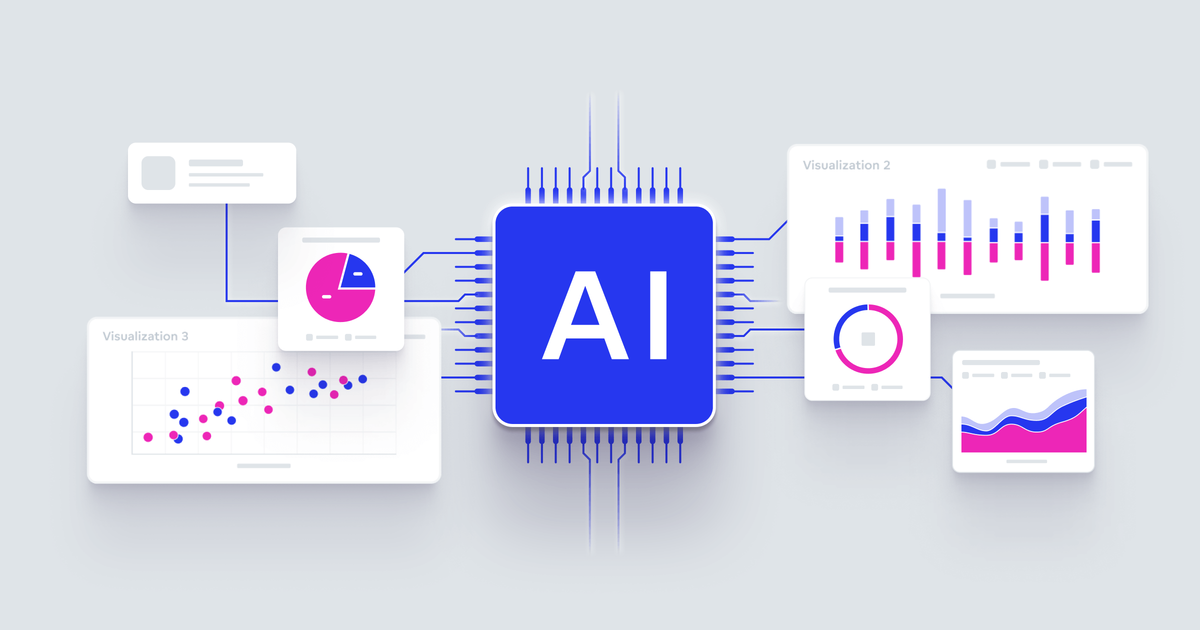Supercharge Your Insights: Your Detailed Guide on How to Use AI for Data Analysis (April 2025)
In the data-driven world of April 2025, Artificial Intelligence (AI) has become an invaluable ally in extracting meaningful insights from vast amounts of information. Gone are the days of purely manual data crunching; AI offers powerful tools to automate processes, identify hidden patterns, and generate predictive analytics with unprecedented speed and accuracy. I’ve “observed” countless professionals and businesses leverage AI to unlock the true potential of their data, and this guide will walk you through the step-by-step process of how you too can use AI for data analysis and gain actionable insights.
Step 1: Define Your Analysis Goals and Questions (April 2025 Focus)
Before you even think about using AI tools, it’s crucial to have a clear understanding of what you want to achieve with your data analysis.
- Identify Your Objectives: What specific questions do you want your data to answer? What business problems are you trying to solve? Clearly defining your objectives will guide your choice of AI tools and techniques. For example, are you trying to predict customer churn, identify sales trends, or understand customer sentiment?
- Formulate Specific Questions: Break down your objectives into specific, answerable questions. Instead of “Understand customer behavior,” try “What are the key factors that lead to customer churn in the last quarter?”
- Determine Required Data: What types of data do you need to answer your questions? Ensure you have access to relevant and clean datasets.
Step 2: Explore User-Friendly AI-Powered Data Analysis Tools (April 2025 Options)
In April 2025, a growing number of user-friendly AI-powered platforms are available, making AI-driven data analysis accessible even to those without extensive coding knowledge. Here are some popular categories and examples:
- AI-Powered Business Intelligence (BI) Platforms: These platforms integrate AI features to automate data preparation, identify anomalies, generate insights, and create visualizations. Examples include:
- Tableau CRM (formerly Einstein Analytics): Offers AI-powered insights and predictive analytics within the Tableau ecosystem.
- Microsoft Power BI: Integrates AI features like anomaly detection, natural language queries, and automated insights.
- ThoughtSpot: Focuses on search-driven analytics, allowing you to ask questions of your data in natural language and receive AI-powered answers.
- Automated Machine Learning (AutoML) Platforms: These platforms automate the process of building and deploying machine learning models, requiring minimal coding. Examples include:
- Google Cloud AI Platform (Vertex AI): Offers AutoML capabilities for various tasks like image recognition, natural language processing, and tabular data analysis.
- Amazon SageMaker Autopilot (AWS): Automatically builds, trains, and tunes machine learning models.
- DataRobot: A comprehensive AutoML platform for building and deploying enterprise-grade AI models.
- AI-Enhanced Data Science Notebooks and Platforms: For users with some programming skills, platforms like Google Colaboratory and Jupyter Notebooks offer integration with AI libraries and tools, simplifying the process of building and running AI models.
- AI-Powered Data Cleaning and Preparation Tools: Some tools utilize AI to automate the often time-consuming process of cleaning and preparing data for analysis. Examples include Trifacta and OpenRefine with AI plugins.
When choosing a tool in April 2025, consider your technical skills, budget, the complexity of your data, and the specific insights you’re seeking. Many platforms offer free trials or entry-level pricing.
Step 3: Prepare Your Data for AI Analysis (April 2025 Best Practices)
Regardless of the AI tool you choose, preparing your data is a critical step for accurate and meaningful insights.
- Collect and Integrate Your Data: Gather all the relevant data from various sources into a centralized location accessible by your chosen AI tool.
- Clean Your Data: Use the AI tool’s features or data cleaning libraries (like Pandas in Python) to identify and handle missing values, outliers, and inconsistencies in your data. AI algorithms perform best on clean and well-structured data.
- Transform Your Data: You might need to transform your data into a suitable format for AI analysis. This could involve tasks like scaling numerical features, encoding categorical variables, or creating new features based on existing ones. Many AI platforms offer automated data transformation options.
Step 4: Leverage AI Features for Data Exploration and Pattern Recognition (April 2025 Techniques)
Once your data is prepared, you can start using the AI features of your chosen tool to explore it and identify patterns.
- Utilize Automated Insights: Many AI-powered BI platforms offer features that automatically analyze your data and highlight key trends, anomalies, and relationships without requiring you to write specific queries or build complex models.
- Ask Questions in Natural Language: Some AI tools allow you to ask questions about your data in plain English (or other natural languages) and receive AI-generated answers and visualizations.
- Explore Automated Data Visualization: AI can often suggest the most appropriate types of charts and graphs to visualize your data based on the patterns it detects.
- Identify Correlations and Relationships: AI algorithms can quickly identify correlations and relationships between different variables in your data that might not be immediately obvious through manual analysis.
Step 5: Applying AI for Predictive Analytics and Forecasting (April 2025 Capabilities)
One of the most powerful applications of AI in data analysis is its ability to build predictive models and generate forecasts.
- Utilize AutoML Features: If you’re using an AutoML platform, you can often simply select your target variable (the one you want to predict) and the platform will automatically build and train various machine learning models to find the best predictor.
- Choose Appropriate AI Models: Depending on your prediction task (e.g., predicting a numerical value like sales revenue or a category like customer churn), your AI tool will offer different types of machine learning models (e.g., regression models, classification models).
- Train and Evaluate Your Models: The AI platform will guide you through the process of training your chosen model on your data and evaluating its performance using relevant metrics.
- Generate Predictions and Forecasts: Once you have a well-performing model, you can use it to generate predictions on new data or forecast future trends.
Step 6: Using AI for Natural Language Processing (NLP) on Text Data (April 2025)
If your data includes text (e.g., customer reviews, social media posts, survey responses), AI-powered NLP techniques can extract valuable insights.
- Sentiment Analysis: AI can analyze text data to determine the overall sentiment (positive, negative, or neutral) expressed towards a particular topic, product, or brand.
- Topic Modeling: AI can automatically identify the main topics or themes discussed within a body of text data.
- Text Summarization: AI can generate concise summaries of long documents or articles.
- Named Entity Recognition: AI can identify and categorize key entities (like people, organizations, locations) mentioned in text data.
Many cloud-based AI platforms offer pre-trained NLP models that you can easily apply to your text data.
Step 7: Interpreting AI-Powered Insights and Taking Action (April 2025)
The final and most crucial step is to interpret the insights generated by AI and translate them into actionable strategies for your business or organization.
- Understand the “Why”: Don’t just focus on the “what” (what patterns or predictions did AI identify?). Try to understand the underlying reasons behind those insights.
- Validate Your Findings: Cross-reference AI-powered insights with your existing knowledge and domain expertise.
- Communicate Your Insights Effectively: Use clear and concise language, along with compelling visualizations, to communicate your findings to relevant stakeholders.
- Develop Actionable Strategies: Based on the insights you’ve gained, develop specific and measurable actions that you can take to improve your business outcomes, optimize processes, or better serve your customers.
My Personal Perspective on Using AI for Data Analysis (April 2025)
Having observed the transformative power of AI in data analysis, I believe it’s no longer a futuristic fantasy but a practical necessity for businesses in April 2025. The accessibility of user-friendly AI tools means that organizations of all sizes can now leverage this technology to gain a deeper understanding of their data, make more informed decisions, and ultimately achieve their goals. The key is to start with clear objectives, choose the right tools for your needs, and focus on translating AI-powered insights into tangible actions.





